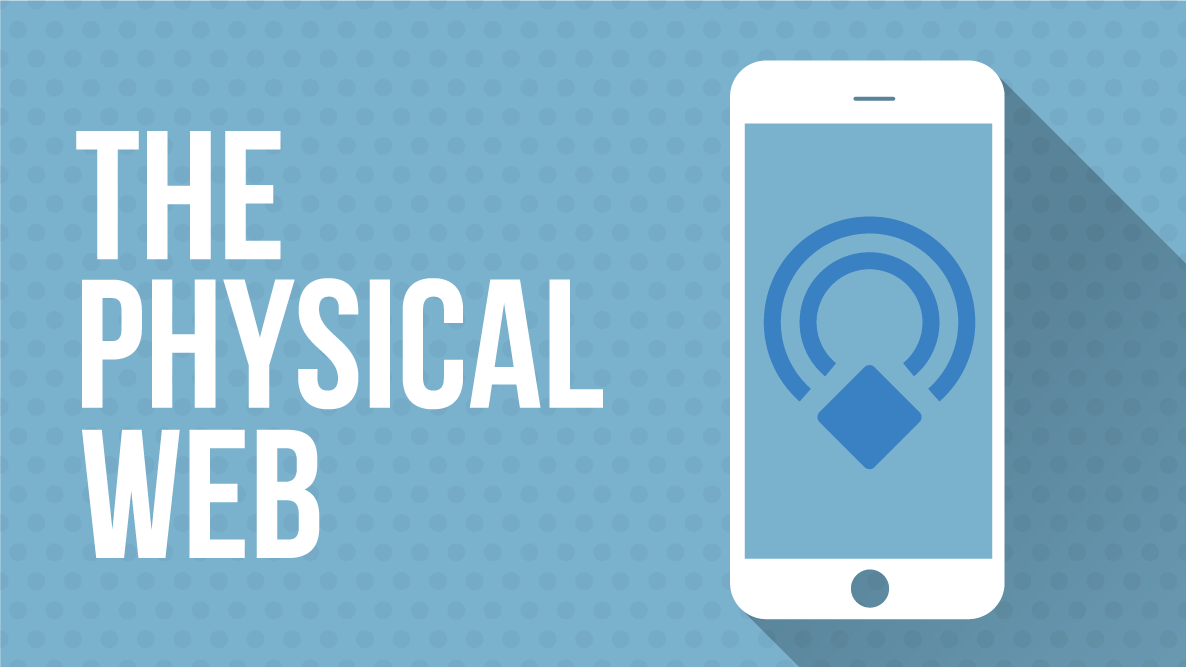What is the physical web?
The next level of mobile, local marketing – seamlessly, intuitively engaging potential customers – is right around the corner. The physical web is designed to bring people closer to each other and to your brand. It uses technology from Google and independent developers to create a hyperlocal online system that allows anybody with a smartphone to connect to products, events, brands and services. Though the infrastructure is just starting to come together, and currently exists in prototype form, it’s shaping up to be a unique development in digital marketing, and something that all strategists will want to stay up-to-date on.
Tech enthusiasts have been talking about the internet of things (IoT) since the 1990s – think sci-fi: from smart-cities to wearable tech to refrigerators with IP addresses. The physical web is a lightweight, low-power, widely compatible “layer” that can be dropped over the IoT as we know it to facilitate interaction and awareness between users and anything nearby or relevant to their lives that they might be interested in.
What if we could smoothly and intuitively interact with a bus stop, a Zipcar, a vending machine, a movie poster, or even a dog collar? And what if we could make that interaction URL-based and app-free? Local beacons, which can be positioned in almost any object imaginable, might soon have the ability to communicate with your phone about relevant information and services. The potential for toys alone is enough to make anyone eager for widespread use of the physical web. But the applications for practical services like transportation, B2B business, government and education show a seriously functional, utilitarian promise.
Everyday uses (that developers have thought of so far!)
The physical web, which Google is developing publicly, is open-source to encourage independent developer partners to help create applications. Here are some examples (each under a minute) of how the physical web could play a part in our daily lives:
The physical web is coming one way or another. Are you ready?
With initiatives like this, progress happens quickly. The physical web sounds like science fiction, but then again, so do many of Google’s projects. After all, this is a company that, in only a few years: mapped almost every inch of the globe in glorious 360-degree HD (in some states using self-driving cars), inspired the modern search engine, presents billions of videos every day, and seeks to provide free worldwide internet using hot air balloons.
It’s not a question of if the physical web will happen, nor is it of when it’s coming. The question is when will we realize it already exists and has begun to influence marketing, similarly to developments like web 2.0, video streaming and social integration. It will be a gradual roll-out, but the physical web is sure to make its mark in digital content marketing as they co-evolve.
How ready is your brand to step into the future of digital marketing? In the era of the internet of things, where smart electronics (and even traditionally non-electronic objects) are connected to a network with consumers and other businesses, Google is engineering an interface that makes it easy for users to connect with brands based on who they are, what they like, where they are and more.
How is it useful for marketing?
Smart devices continue to increase in usage and power. While apps are still a popular medium, the easiest way of reaching the most people is to communicate through one unified channel, rather than through brand-specific apps. Marketers might soon be able to harness this power, and allow people to interact on demand with their brand.
Reaching out to customers through an app only targets people in your network, because they have heard about you and already chosen to download your app. The physical web can use digital beacons to push information, via URL, not just to fans, followers and customers, but to people nearby or potentially interested. According to Google and GitHub, by using these beacons:
- A cat collar can let you call to find the owner.
- A bus can tell you its next stop.
- A parking meter can let you pay using your phone and the cloud.
- Any store, no matter how small, can offer an online experience when you walk in.
- A shared car service can broadcast a signup page, allowing you to immediately drive away.
- Industrial equipment can offer diagnostics.
The uses could be limitless, and the extensive applications could open up the full potential of the internet. While each of the above examples is fun, futuristic, cute or clever, alone they aren’t necessarily game-changing. However, when the internet as a whole adopts the technology, and incorporates it holistically, its entire utility takes on a new and unpredictably far-reaching power.






